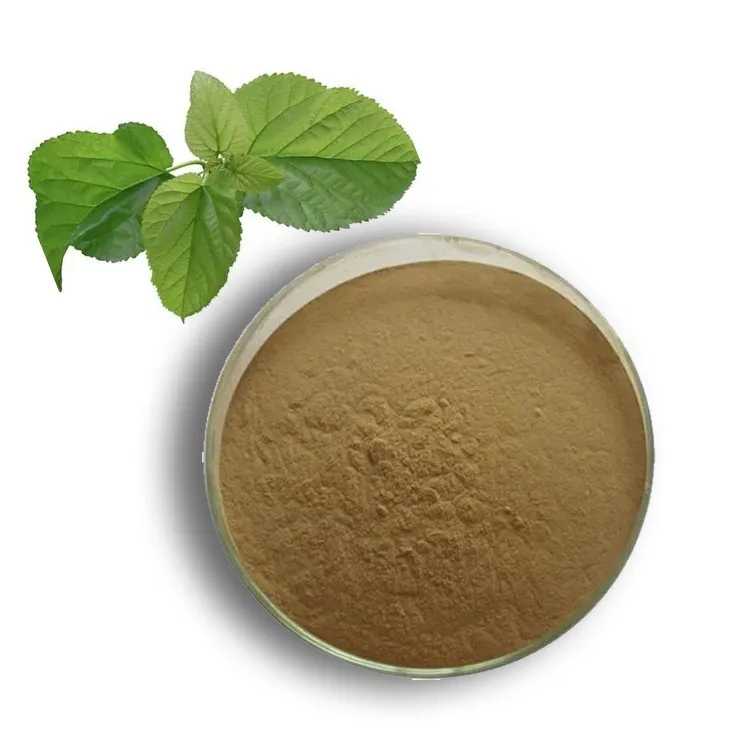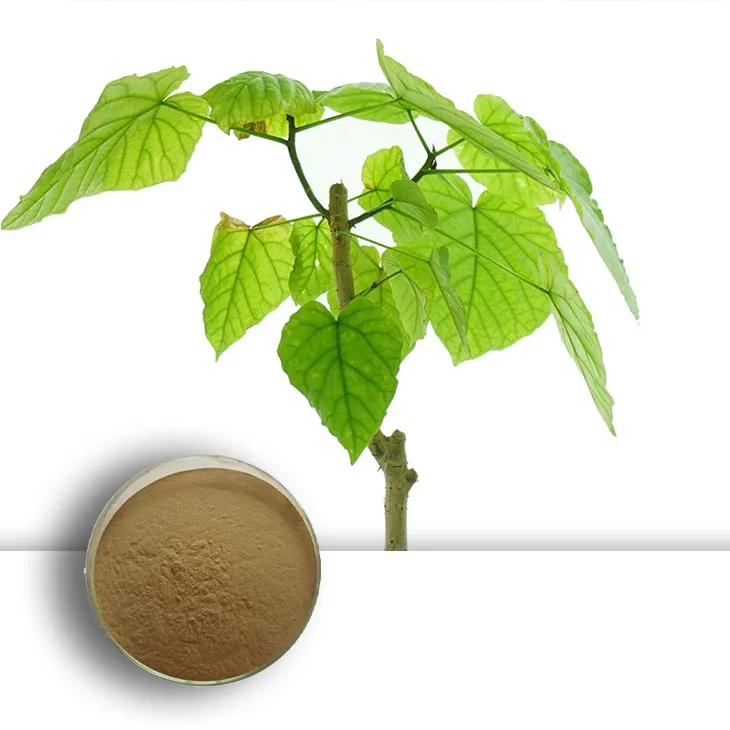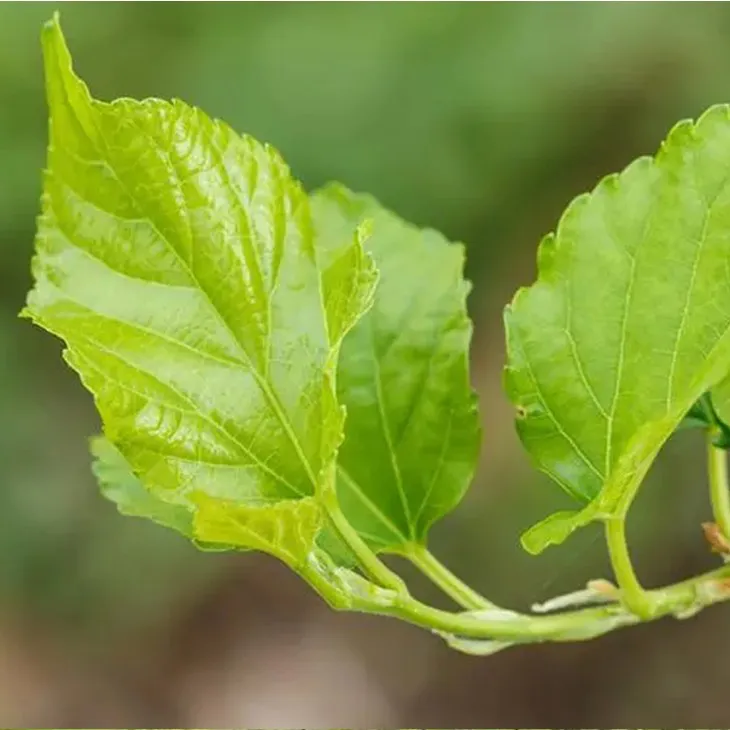- 0086-571-85302990
- sales@greenskybio.com
How to make powder from mulberry leaf extract?
2024-11-28

1. Introduction
Mulberry leaves have been used for various purposes in traditional medicine and as a natural supplement. Extracting and converting the extract into powder form can enhance its usability and preservation. This article will delve into the details of how to produce powder from Mulberry leaf Extract, covering important aspects such as temperature control during extraction, grinding methods for the final powder, and quality assurance.

2. Mulberry Leaf Selection
Quality Leaves: The first step in making Mulberry leaf Extract powder is to select high - quality mulberry leaves. Look for leaves that are fresh, free from pests and diseases, and preferably from a clean and unpolluted environment.
Species Consideration: Different species of mulberry may have slightly different chemical compositions. For example, some species may be richer in certain bioactive compounds. Commonly used mulberry species for extraction include Morus alba.

3. Cleaning and Preparation
Thorough Cleaning: Once the leaves are selected, they need to be thoroughly cleaned. Wash the mulberry leaves in clean water multiple times to remove any dirt, dust, or other contaminants.
Drying: After cleaning, the leaves should be dried. There are two main methods for drying:
- Natural Drying: Spread the leaves in a well - ventilated area, away from direct sunlight. This method is more natural but may take longer, usually several days to a week depending on the environmental conditions.
- Artificial Drying: Using a dehydrator or an oven set at a low temperature (around 40 - 50°C). This method is faster but requires careful temperature control to avoid over - drying or burning the leaves.

4. Extraction Process
4.1 Solvent Selection
The choice of solvent is crucial for extracting the desired compounds from mulberry leaves.
- Water: Water is a common and safe solvent. It can extract many water - soluble compounds such as polysaccharides. However, it may not be as effective in extracting some lipid - soluble compounds.
- Ethanol: Ethanol is often used as it can extract a wide range of compounds, including flavonoids and phenolic acids. A typical concentration for ethanol extraction is around 50 - 70%.
- Mixed Solvents: Sometimes, a combination of solvents, such as a water - ethanol mixture, can be used to achieve a more comprehensive extraction.
4.2 Temperature Control
Optimal Temperature Range: During the extraction process, temperature control is vital. For water - based extractions, a temperature range of 60 - 80°C is often considered optimal. This temperature range helps to increase the solubility of the compounds in the solvent without causing significant degradation.
Effects of High Temperature: If the temperature is too high, it can lead to the degradation of some heat - sensitive compounds. For example, some bioactive flavonoids may lose their activity at temperatures above 80 - 90°C.
Low - Temperature Extractions: Some extractions can also be carried out at lower temperatures, especially when using ethanol or mixed solvents. Low - temperature extractions can be more suitable for preserving the integrity of certain volatile compounds.
4.3 Extraction Time
The extraction time also affects the yield and quality of the extract.
- Short - term Extractions: For water extractions, a short - term extraction of 1 - 2 hours may be sufficient to extract some of the major water - soluble compounds. However, this may not extract all the desired components.
- Long - term Extractions: Longer extraction times, such as 4 - 8 hours, can increase the yield of the extract but may also increase the risk of extracting unwanted compounds or causing degradation.
4.4 Filtration
After the extraction, the mixture needs to be filtered to separate the liquid extract from the solid residue.
- Filter Paper: Simple filter paper can be used for a basic filtration. This is suitable for removing large particles and debris from the extract.
- Vacuum Filtration: For more efficient filtration, vacuum filtration can be used. This method can remove finer particles and can be faster, especially for larger volumes of extract.
5. Concentration of the Extract
The extracted liquid may contain a large amount of solvent, which needs to be removed to obtain a more concentrated extract.
- Evaporation: One common method is evaporation. This can be done using a rotary evaporator or simply by heating the extract in a shallow dish at a low temperature (below 60°C) under gentle stirring. The goal is to remove the solvent while minimizing the loss of the active compounds.
- Freeze - Drying: Freeze - drying is another option, especially for heat - sensitive extracts. It involves freezing the extract first and then removing the ice by sublimation under vacuum. This method can preserve the structure and activity of the compounds better but is more expensive and requires specialized equipment.
6. Grinding the Concentrated Extract into Powder
6.1 Grinding Equipment
Mortar and Pestle: For small - scale production, a mortar and pestle can be used. This traditional method allows for some control over the grinding process but may be time - consuming and may not produce a very fine powder.
Electric Grinders: There are various types of electric grinders available, such as blade grinders and burr grinders. Blade grinders are more common and are suitable for quickly reducing the extract into a powder. However, they may generate more heat during the grinding process, which could potentially affect the quality of the powder. Burr grinders, on the other hand, can produce a more uniform and fine powder with less heat generation.
6.2 Grinding Conditions
Temperature Control during Grinding: As mentioned, heat generation during grinding can be a problem. If using an electric grinder, it is advisable to grind in short bursts to avoid overheating. For heat - sensitive extracts, it may be necessary to cool the grinder or the extract before grinding.
Particle Size: The desired particle size of the powder may vary depending on the intended use. For example, if the powder is to be used in capsules, a finer powder may be required. Generally, a particle size of less than 100 micrometers is considered fine for most applications.
7. Quality Assurance
7.1 Purity Testing
Chemical Analysis: To ensure the purity of the Mulberry leaf Extract powder, chemical analysis can be carried out. This may include tests for the presence of major bioactive compounds such as flavonoids and polysaccharides. High - performance liquid chromatography (HPLC) is a commonly used technique for analyzing the chemical composition of the powder.
Contaminant Detection: It is also important to check for contaminants such as heavy metals (e.g., lead, mercury), pesticides, and microbial contaminants. Atomic absorption spectroscopy can be used for heavy metal detection, and microbiological tests such as total plate count can be used to detect microbial contamination.
7.2 Stability Testing
Storage Stability: The powder should be tested for its stability during storage. This involves storing the powder under different conditions (e.g., different temperatures, humidity levels) and monitoring the changes in its chemical composition and activity over time.
Oxidation Stability: Mulberry leaf extract powder may be susceptible to oxidation due to the presence of certain compounds. Antioxidant assays can be used to evaluate the oxidation stability of the powder.
7.3 Standardization
Setting Standards: Establishing standards for the mulberry leaf extract powder is essential for quality control. These standards can include specifications for the content of bioactive compounds, purity levels, and physical characteristics such as particle size.
Compliance with Regulations: The production of mulberry leaf extract powder should also comply with relevant regulations, such as food and drug regulations if the powder is intended for human consumption or use in dietary supplements.
8. Packaging and Storage
Packaging Materials: The choice of packaging material is important for protecting the powder from moisture, light, and air. Common packaging materials include aluminum - foil - lined bags, which can provide a good barrier against these factors.
Storage Conditions: The powder should be stored in a cool, dry, and dark place. Ideal storage temperatures are around 4 - 8°C for long - term storage. Storing the powder under these conditions can help maintain its quality and stability for a longer period.
9. Conclusion
Producing powder from mulberry leaf extract involves several steps, from leaf selection to packaging and storage. Each step, including temperature control during extraction, grinding methods, and quality assurance, is crucial for obtaining a high - quality product. By following the proper procedures and ensuring quality control at every stage, it is possible to produce mulberry leaf extract powder that is pure, stable, and suitable for various applications, whether in traditional medicine, dietary supplements, or other areas.
FAQ:
What are the key steps in making powder from mulberry leaf extract?
First, the mulberry leaves need to be properly extracted. This often involves using suitable solvents and controlled extraction conditions such as temperature and time. After extraction, the liquid extract is then dried. This can be done through methods like freeze - drying or spray - drying. Finally, the dried extract is ground into a fine powder. Different grinding techniques can be used depending on the desired particle size and powder quality.
How important is temperature control during the extraction process?
Temperature control is very crucial during the extraction of mulberry leaf extract for powder production. If the temperature is too low, the extraction efficiency may be low, resulting in a lower yield of active components. On the other hand, if the temperature is too high, it may cause degradation of some active substances in the mulberry leaves, thus affecting the quality of the final powder. So, a carefully optimized temperature range is necessary to ensure both a good yield and high - quality extract.
What are the common grinding methods for making mulberry leaf extract powder?
One common method is mechanical grinding using a grinder or mill. There are different types of mills such as ball mills and hammer mills. Ball mills are often used when a finer powder with a more uniform particle size is desired. Another method could be cryogenic grinding, which is useful when the active components in the extract are sensitive to heat. In cryogenic grinding, the sample is cooled to a very low temperature before grinding to prevent degradation due to heat.
How can we ensure the quality of the mulberry leaf extract powder?
Quality assurance of mulberry leaf extract powder can be achieved through several ways. Firstly, starting with high - quality mulberry leaves is essential. Secondly, during the extraction process, strict control of parameters like temperature, solvent type and extraction time is necessary. After extraction, proper drying methods should be employed to prevent moisture retention or spoilage. Also, testing for the presence and concentration of active components, as well as for contaminants, is crucial. Regular quality control checks throughout the production process help to ensure a consistent and high - quality final product.
Can additives be used in the production of mulberry leaf extract powder?
It depends on the intended use of the powder. In some cases, additives may be used. For example, if the powder is to be used in food products, certain food - grade additives may be added to improve its stability, solubility or taste. However, if the powder is for medicinal or pure extract purposes, additives are usually avoided to ensure the purity of the extract. In any case, if additives are used, they must comply with relevant regulations regarding safety and quality.
Related literature
- The Extraction and Utilization of Mulberry Leaf Components"
- "Optimizing the Production of Mulberry Leaf Extract Powder: A Review"
- "Quality Control in Mulberry Leaf Extract Powder Manufacturing"
- ▶ Hesperidin
- ▶ citrus bioflavonoids
- ▶ plant extract
- ▶ lycopene
- ▶ Diosmin
- ▶ Grape seed extract
- ▶ Sea buckthorn Juice Powder
- ▶ Beetroot powder
- ▶ Hops Extract
- ▶ Artichoke Extract
- ▶ Reishi mushroom extract
- ▶ Astaxanthin
- ▶ Green Tea Extract
- ▶ Curcumin Extract
- ▶ Horse Chestnut Extract
- ▶ Other Problems
- ▶ Boswellia Serrata Extract
- ▶ Resveratrol Extract
- ▶ Marigold Extract
- ▶ Grape Leaf Extract
- ▶ blog3
- ▶ blog4
-
Bulk purchase of seabuckthorn bark extract.
2024-11-28
-
中国藤黄果提取物粉末供应商
2024-11-28
-
China Banana Juice Powder Factory.
2024-11-28
-
Beta Carotene
2024-11-28
-
Bayberry Extract
2024-11-28
-
White Peony Extract
2024-11-28
-
Dandelion Leaf Extract
2024-11-28
-
Reishi mushroom extract
2024-11-28
-
Europen Bilberry Extract
2024-11-28
-
Peppermint Oil
2024-11-28
-
Ginseng Root Extract
2024-11-28
-
Agaricus Blazei Extract
2024-11-28
-
Giant Knotweed Extract
2024-11-28





















